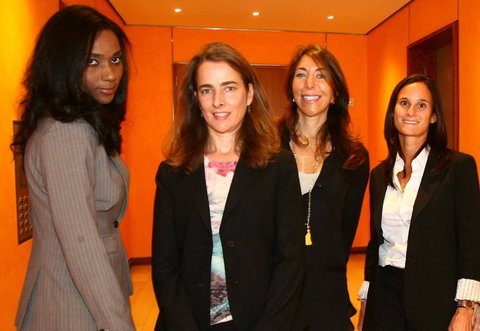It will still exist after Microsoft buys the company’s handset business. While Microsoft is acquiring what Nokia is best known for, the Finnish company is holding on to two if its major businesses: networking and mapping.
“There’s a lot of emotion involved in this move,” Timo Ihamuotila, Nokia’s chief financial officer, said in an interview. “Nokia has been synonymous with cellphones for the last two decades. It’s hard, but Finland will have two strong technology companies that result from this deal.”
Nokia focused on cellphones in the 1990s after facing financial difficulties. By the height of the dot-com boom at the end of the 1900s, Nokia was the world’s largest cellphone maker. It attained a market value of around $250 billion. Yet a failure to develop a smartphone good enough to rival Apple’s iPhone and popular Android-based devices from Samsung Electronics collapsed the company’s market share from around 30 percent in 2009 to less than 4 percent last year, according to the research firm Gartner. In 2013, Samsung dethroned Nokia to become the largest phone maker.
While Nokia’s mobile phone business has been dwindling, the remaining segments are not laggards. Flush with Microsoft money from selling off its core businesses, the new Nokia could be well positioned to compete. It might be invisible to consumers, but Nokia’s networking business, which includes equipment it sells to telecom operators to run their wireless networks, brings in the majority of the company’s annual revenue.
Nokia’s maps technology, another part of the company Microsoft does not want, has a valuable global database of geographical information. Called Here, it can be licensed to other companies that want to build products and services around maps.
Without having to worry about making popular software and sleek phones to compete in the brutal handset industry, the new Nokia would be freed to build a profitable company from the remaining businesses. But it is unclear how well those businesses will stand on their own. And even without a mobile unit, Nokia still has to compete in a rapidly changing mobile industry that left it behind long ago.
“It’s a very odd mix at this point,” said Jan Dawson, a telecom analyst for Ovum. “There’s no other company that combines heavy network infrastructure with what’s basically a pure data and software asset, and there’s very little synergy between the two.”
Nokia’s mobile infrastructure business, which began as a joint venture with Siemens, currently generates around 85 percent of the company’s annual $18.4 billion in revenues. Nokia acquired the 50 percent stake in Nokia Siemens Networks earlier this year for $2.2 billion.
It is expected to compete against telecom suppliers like Ericsson of Sweden and Huawei and ZTE of China to win contracts from the world’s largest cellphone operators. China Mobile and Vodafone of Britain are planning to spend billions of dollars to upgrade their mobile data networks to so-called fourth-generation technology.
By the time the next generation of wireless technology arrives and vendors are upgrading their equipment, Nokia, now a smaller company, will be in a tough spot.
It may have some success in the United States and Europe, where the governments are wary of Huawei and ZTE because of security concerns about Chinese government-sponsored spying. But it will have to invest heavily to challenge Ericsson, said Tero Kuittinen, an independent analyst for Alekstra, a company that does mobile diagnostics.
“Being a small network infrastructure company, that’s a very hard business,” Mr. Kuittinen said. “Ericsson is such a giant in this industry.”
Nokia’s mapping component, Here, provides GPS services to dashboard navigation systems in many car models. The unit, which generates around $1.3 billion in annual revenue, plans to sell GPS and entertainment services to companies that do not want to build them from scratch, according to Mr. Ihamuotila, Nokia’s chief financial officer.
Nokia maps might hold some appeal to device makers because Nokia will not be competing with them. (Microsoft said it would continue to use the Nokia brand on smartphones for about 10 years.)
But the value of Nokia’s maps may decrease now that the company no longer has a device business attached to it. As smartphones became popular, digital maps became more complex and sophisticated because people were pulling up directions from the devices they carried instead of looking up directions on a computer. As they did, the mapmakers gathered information from people’s smartphones and made the maps more accurate and more useful.
Google, a rival to Nokia’s mapping services, treats the millions of smartphones using its map software as data probes to improve the thoroughness of its database.
Nokia has also retained its research and development facilities and patent portfolio, with plans to develop new products to license, or sell technologies to other companies.
However, with so many mobile devices relying on Google’s Android software, and so many smartphones relying on parts and technologies made by Samsung, the Finnish giant will have to come up with something truly compelling to stand out in stores.
Even with the remnants of Nokia, the loss of its phone business creates a void for Finland as a whole, said Mr. Kuittinen, the Alekstra analyst. Many Finnish universities offered courses in mathematics and software engineering with Nokia in mind as a future employer.
Now, they may look to other countries, like the United States, if they want to get into the business of making mobile software, one of the most popular technology sectors for engineers.
“The industry just vanished,” Mr. Kuittinen said, “and this is not something that happens very often.”

Article source: http://www.nytimes.com/2013/09/04/technology/shedding-handsets-nokia-looks-to-the-future.html?partner=rss&emc=rss


